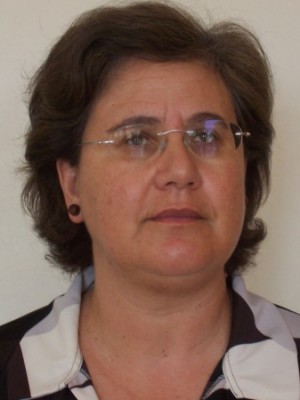abstract
Electrospray ionization mass spectrometry (ESIMS) was used to investigate the coordination modes of the complexes [Ru-II([9]aneS(3))(HCpz(3))Cl]Cl, [Ru-II ([9]aneS(3))(HCpz(3))](Cl)PF6 and [Ru-II([9]aneS(3))(HCpz(3))](PF6)(2) ([9]aneS(3) = 1,4,7-trithiacyclononane; HCpz(3) = tris(1-pyrazolyl)methane) in methanol, acetonitrile and methanol/water solutions. The complex [Ru-II([9]aneS(3))(HCpz(3))Cl]Cl shows a rapidly exchangeable Cl ligand, with formation of a doubly charged ion [Ru-II([9]aneS(3))(HCpz(3))](2+), m/z 248, but the [Ru-II([9]aneS(3))(HCpz(3))Cl](+), m/z 531, is also observed and both species still coexist after 16 h. The formation of the [Ru-II([9]aneS(3))(HCpz(3))](2+) and [Ru-II([9]aneS(3))(HCpz(3))Cl](+) ions by electrospraying solutions of [Ru-II([9]aneS(3))(dmso)Cl-2] (dmso = dimethylsulfoxide) and HCpz(3) in water/methanol was also studied. Fragmentation of the [Ru-II([9]aneS(3))(HCpz(3))](2+) ions by losses from the[9]aneS(3) ligand seems to point to a k(3) strained coordination mode, whereas fragmentation of the [Ru-II([9]aneS(3))(HCpz(3))Cl](+) points to a less strained complex and to two isomers: the complex [Ru-II([9]aneS(3))(HCpz(3))Cl](+) and the ion pair [Ru-II([9]aneS(3))(HCpz(3))+Cl](+). Further support for the ion pair hypothesis is the strong increase of the relative abundance of the [Ru-II([9]aneS(3))(HCpz(3))+PF6](+) ion, m/z 641, formed from solutions of the [Ru-II(k(3)-[9]aneS(3))(k(3)-HCpz(3))](Cl)PF6 and [Ru-II(k(3)-[9]aneS(3))(k(3)-HCpz(3))](PF6)(2) complexes, after 16 h. The high stability of the ion pairs indicates that they may be inner sphere ion pairs and that either [9]aneS(3) or HCpz(3) changes from a k(3) to a k(2) coordination mode. The results support an equilibrium between a full k(3)-[9]aneS(3)/k(3)-HCpz(3) complex and a k(2) + k(3) + Cl/PF6 ion pair. (C) 2010 Elsevier B.V. All rights reserved.
keywords
COLLISIONALLY ACTIVATED DISSOCIATION; SOFT THIOETHER COORDINATION; TRANSITION-METAL COMPLEXES; NOESY NMR-SPECTROSCOPY; CHARGED ALKALINE-EARTH; GAS-PHASE COMPLEXES; STRUCTURAL-CHARACTERIZATION; AMINO-ACIDS; TRIS(PYRAZOLYL)METHANE LIGANDS; = 1,4,7-TRITHIACYCLONONANE
subject category
Physics; Spectroscopy
authors
Izquierdo, RA; Madureira, J; Ramos, CIV; Santana-Marques, MGO; Santos, TM
our authors
acknowledgements
The authors wish to thank FCT (Fundacao para a Ciencia e Tecnologia, Portugal) for financial support (POCTI/42883/QUI/2001). R.A. lzquierdo thanks the University of Aveiro for a Ph.D. scholarship. Catarina Ramos and Joao Madureira thank FCT for a Ph.D. grant (SFRH/BD/30775/2006) and a post-doc grant (SFRH/BPD/41138/2007), respectively. Financial support from CICECO (University of Aveiro) is also acknowledged.


